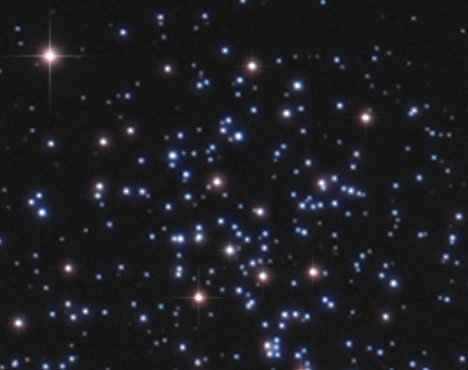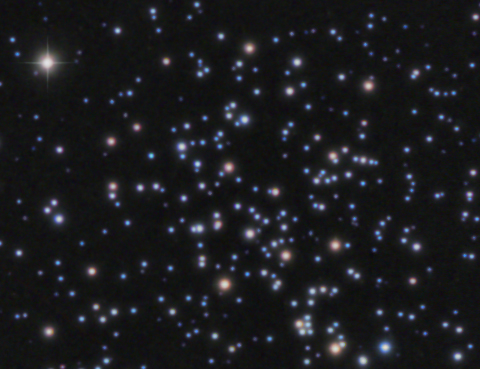SBIG ST-2000XCM color camera vs. the ST-2000XM mono w/filters
Star Comparison
M67 Star Cluster Comparison
This test compares the two cameras performance in recording star shapes and color.
The following examples are crops of open cluster M67 that has a range of blue and orange giant stars. The XM example has been adjusted for correct RGB ratios using the G2 star weight method when combining the 3 separate channels. The uncorrected XCM background displays the typical blue hue common to the color cameras (more green in location with light pollution effects).
• The XCM example displays star edge artifacts that are a result of the de-bayering process when there is a rapid change in intensity which mainly occurs at the star edges. The number of pixels used to sample the star also will affect how visible the artifacts are.
• The XCM version shows tighter PSF for larger star shapes compared to the slightly wider XM version. My experience with the XCM shows this to often often be the case with larger stars. I suspect the RGB filters used with the mono XM have some effect on this occurrence due to reflections.
• The XM version displays clean edges with no artifacts.

|
300X Crop of M67 taken with the XCM ST2000-XCM data details:
|

|
300X Crop of M67 taken with the XM ST2000-XCM data details:
|

|

|
| XCM version after processing to reduce edge artifacts and balance color | XM version with no processing |

|

|
| XCM version after processing | XM version after processing |
Star Test Summary
As seen in this example as well as others star edge artifacts are common when using a color camera. With DSO objects such as red gaseous nebulas they may not be noticeable but against a neutral sky background they will be. When displaying an image for the web which are usually scaled down, the edge artifacts will barely be noticeable if any at all. Star sizes will also determine how noticeable they can be. Smaller stars that occupy only a few pixels will display them more due to the concentrated star energy in only a few pixels. The larger stars have their edges spread out over more pixels and often in a gradual cutoff. The OTA focal length plays an important role in regards to image scale and sampling rate so it's important to have an image scale that's not too under sampled.